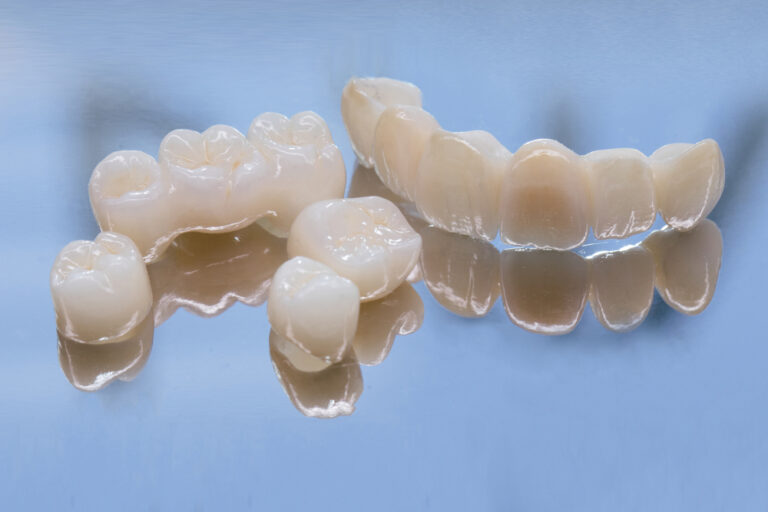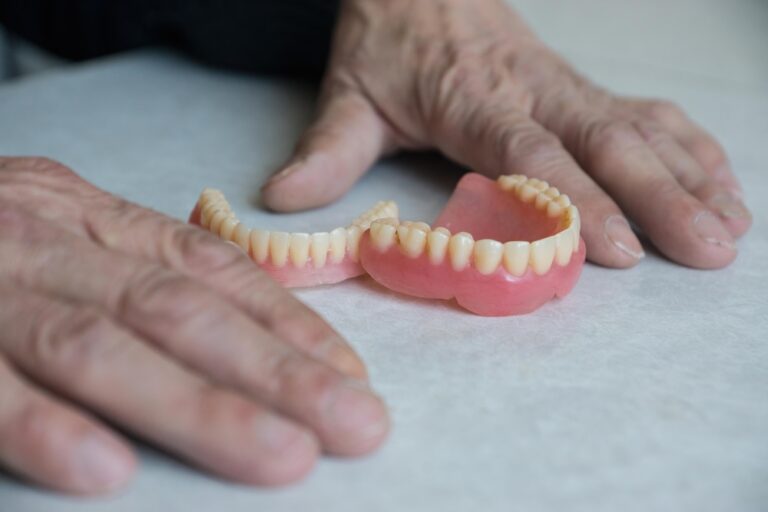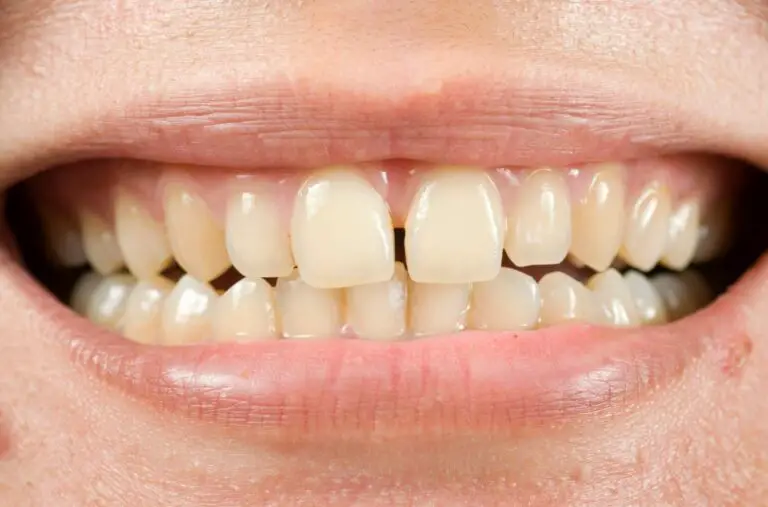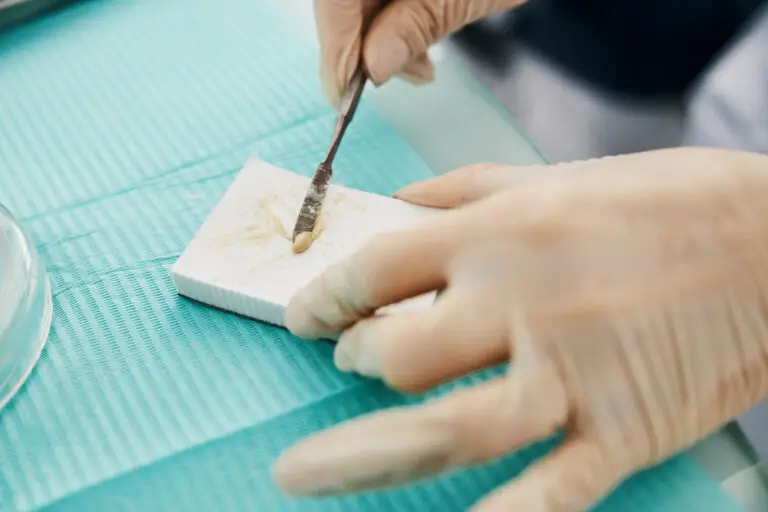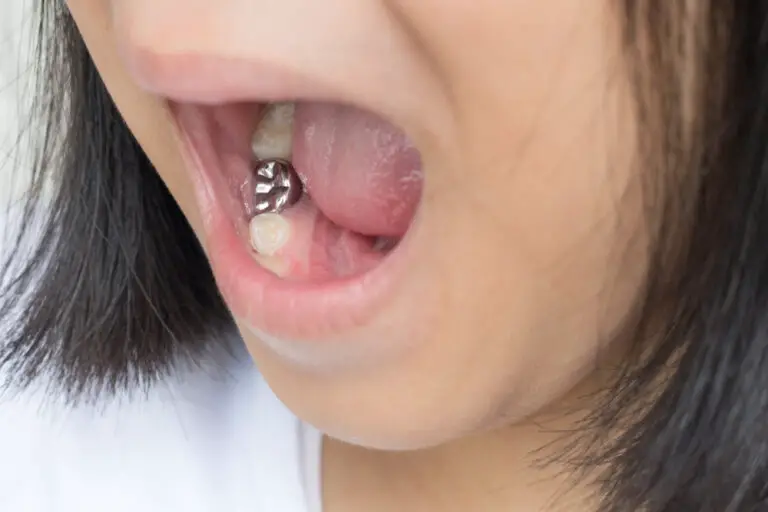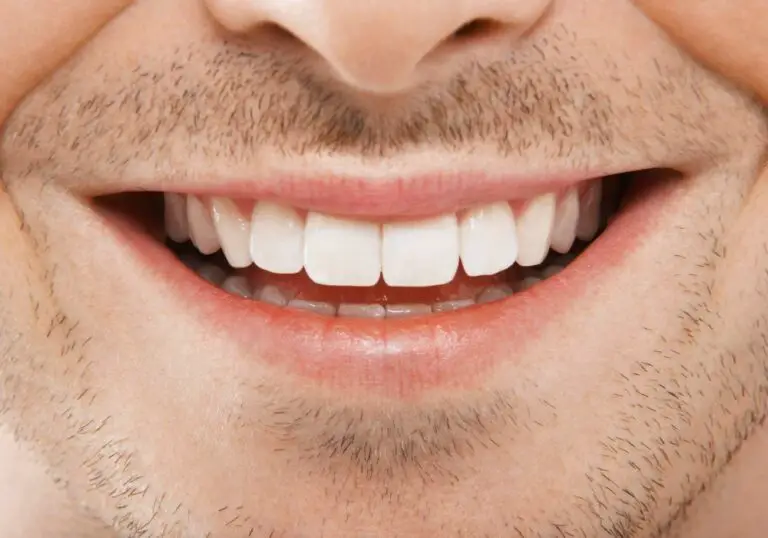Gum recession, also known as gingival recession, is the exposure of tooth roots due to gum tissue wearing away. This common condition can happen slowly over time or more rapidly if certain risk factors are present. Receding gums are a concern because they make teeth prone to decay and may eventually lead to tooth loss. Understanding the causes, symptoms, diagnosis and treatments for gum recession is key to preventing further progression.
What causes gum recession?
A number of factors can contribute to receding gums:
1. Aggressive brushing habits
Brushing too aggressively with a hard-bristled toothbrush or improper brushing technique is a prime cause of gum recession. Scrubbing back and forth across the teeth and gums can wear away the protective gum tissue and expose tooth roots. Brushing with excessive horizontal force is more likely to cause recession than proper gentle, vertical brushing motions.
2. Periodontal disease
Chronic bacterial gum infections break down the tissues surrounding teeth, including the periodontal ligament fibers that hold the gumline in place. Inflamed and deteriorated gum tissues are more likely to recede and expose tooth surfaces. Periodontitis also causes loss of supporting bone around teeth.
3. Tobacco use
Smoking or chewing tobacco greatly increases the risk of gum recession. Tobacco use constricts blood vessels, cutting off oxygen and nutrients that keep gum tissues healthy. Smoking also irritates gums and damages connective tissues.
4. Genetic susceptibility
Some people may simply inherit thinner gum tissue or gum tissue that is more vulnerable to recession. Misaligned teeth or insufficient bone density also increase recession risk. If your parents had gum recession, you are statistically more likely to experience it as well.
5. Teeth grinding and clenching
Habitual grinding or clenching puts excessive force on teeth and can pull gum tissues away, especially from front teeth. The chronic trauma leads to receding gums over areas where force is greatest. Night guards help minimize this damage.
6. Ill-fitting dental work
Braces, dentures, bridges or other appliances that do not fit properly can put extra pressure on teeth. This chronic, concentrated force can cause nearby gum tissues to recede over time.
7. Age
Gums naturally recede to some degree as people age. Older gums are weaker and more susceptible to recession due to poorer circulation and repeated stresses.
8. Hormonal changes
Major hormonal fluctuations, as seen in puberty, pregnancy and menopause, can increase gum vulnerability and inflammation. Gums may become irritated and recede.
What are the symptoms of receding gums?
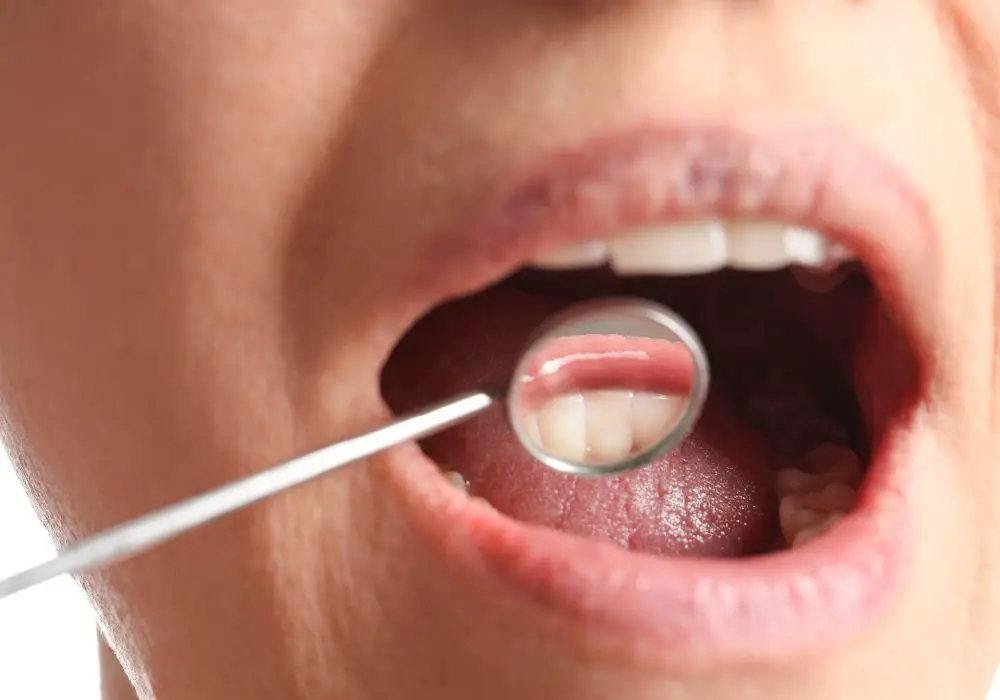
Gum recession is usually a gradual process, but symptoms may include:
- Increased tooth sensitivity, especially to cold foods and drinks. Less gum tissue means less insulation protecting tooth roots.
- Visible roots on some teeth. More of the tooth root becomes uncovered as gums recede.
- Teeth appearing longer than before. The reduction in gum tissue makes more of the tooth crown exposed.
- Yellow or brown deposits on newly exposed roots. These are mineralized plaque deposits.
- Craters or notches in the gumline. Receding gums can take on an uneven, pitted appearance.
- Chronic bad breath or bad taste in the mouth. Pockets formed by receded gums can harbor bacteria and debris.
- Loose or mobile teeth. Shrinking gums lead to reduced stability in the tooth’s anchoring.
- Sudden, rapid gum recession may also be associated with gum pain as tissue tears away.
Table showing symptoms of gum recession:
| Symptom | Description |
|---|---|
| Sensitive teeth | Dentin exposure leads to painful sensitivity, especially to cold |
| Visible roots | More root surface becomes uncovered by receding gums |
| Appearance of longer teeth | Gum loss exposes more of the tooth crown |
| Discolored roots | Mineral deposits appear on newly exposed root surfaces |
| Irregular, notched gums | Gumline appears uneven with notches and craters |
| Loose teeth | Lack of gum support leads to shifting teeth |
| Bad breath/taste | Bacteria in gum pockets causes odor |
| Gum pain | Rapid recession tears gum tissue |
How do dentists diagnose receding gums?
To fully assess the state of your gums, the dentist will:
- Do a visual exam. They look for signs of recession and exposed roots.
- Probe gum pockets. A periodontal probe measures pocket depth around each tooth. Deeper pockets indicate more recession.
- Check for loose teeth. This tests the stability of tooth anchoring as gums recede.
- Analyze bite alignment. Misaligned teeth put more pressure on gums.
- Take dental x-rays. X-rays show loss of bone support around recessed gum areas.
- Examine risk factors. Your hygiene habits, health status and family history provide insight.
Early diagnosis from routine exams allows gum recession treatment to start before extensive damage occurs. Tell your dentist immediately if you notice any symptoms.
What are the treatment options for receding gums?
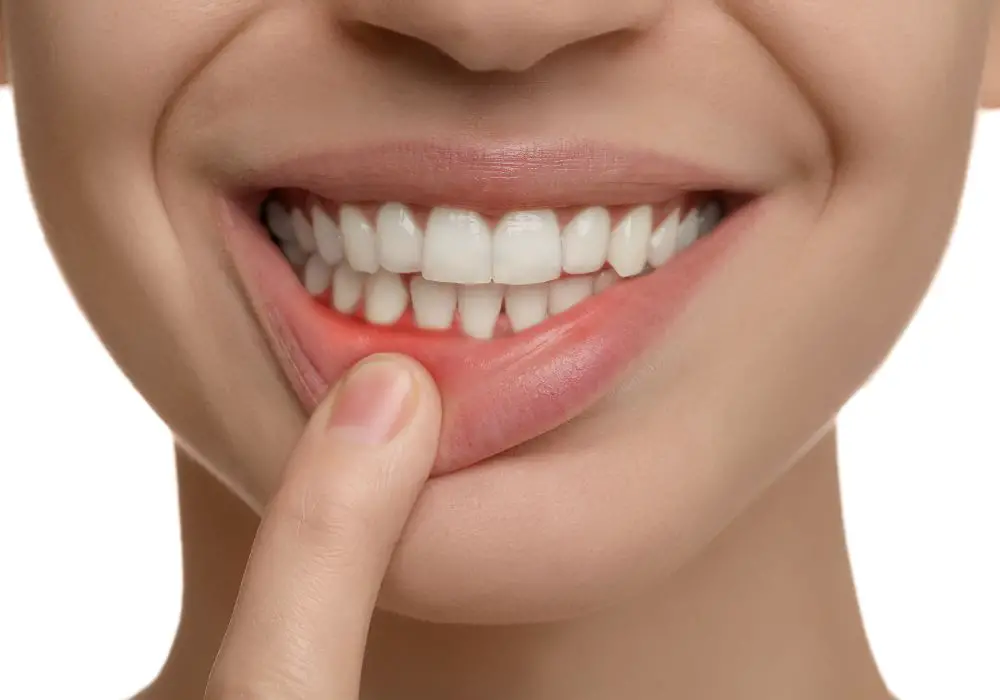
Treatments aim to address the underlying cause of recession and prevent further gum loss:
1. Improved oral hygiene
Gentle brushing and flossing removes damaging plaque. Your dentist demonstrates proper technique.
2. Smoking cessation
Quitting smoking improves gum blood flow and helps stabilize recession.
3. Debridement
Deep cleaning below the gumline removes bacteria and tartar deposits.
4. Medications
Antimicrobial mouthrinses or antibiotics treat gum infection and inflammation when present.
5. Nightguard for grinding/clenching
Prevents the excessive forces during grinding that can traumatize gum tissues.
6. Gum graft surgery
Grafting tissue from the roof of the mouth covers exposed roots and stimulates new gum regrowth.
7. Pinhole surgical technique
A minimally invasive option that manipulates existing gum tissue to cover exposed roots.
8. Other options
These include bite adjustment if necessary, Botox injections to relax chewing muscles, or prescription strength fluoride application to reduce root sensitivity.
The key is early intervention. Allowing significant gum recession to worsen increases the likelihood of eventual tooth loss. Regular dental visits and careful oral hygiene help detect and treat receding gums in the most conservative way possible. Consistent home care and professional treatment provide the best defense against receding gums.
Frequently Asked Questions
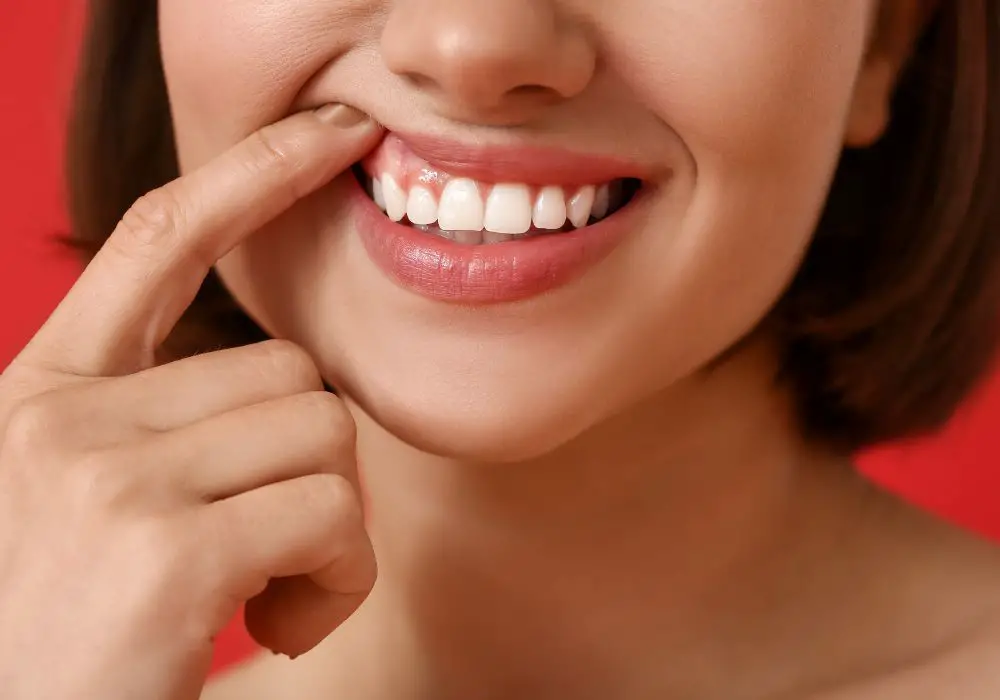
Can receding gums grow back?
Unfortunately, receding gums will not grow back on their own over exposed tooth roots once recession occurs. Treatments like grafting are needed to stimulate new gum tissue that covers the exposed root surfaces.
What is the best toothpaste for receding gums?
Toothpastes containing stannous fluoride help reduce sensitivity from exposed roots. Stannous fluoride also shows some antibacterial effects to fight gum infection. Otherwise, look for apaste gentle on gum tissues.
Can mouthwash reverse gum recession?
While mouthwash alone cannot make receded gums regrow, it can support gum health as part of a treatment plan. The antimicrobial effects help control bacteria to reduce inflammation and disease progression.
Does flossing cause gum recession?
Flossing properly does not cause gum recession. But improper flossing can damage gum tissues, especially snapping floss up and down. Gentle curving floss against the side of each tooth cleans safely below the gumline.
Can receding gums affect crowns or veneers?
Although crowns and veneers themselves don’t recede, the surrounding natural gums can still recede over time. This exposes unsightly dark lines next to restorations. Gum grafting can cover exposed roots near dental work.

